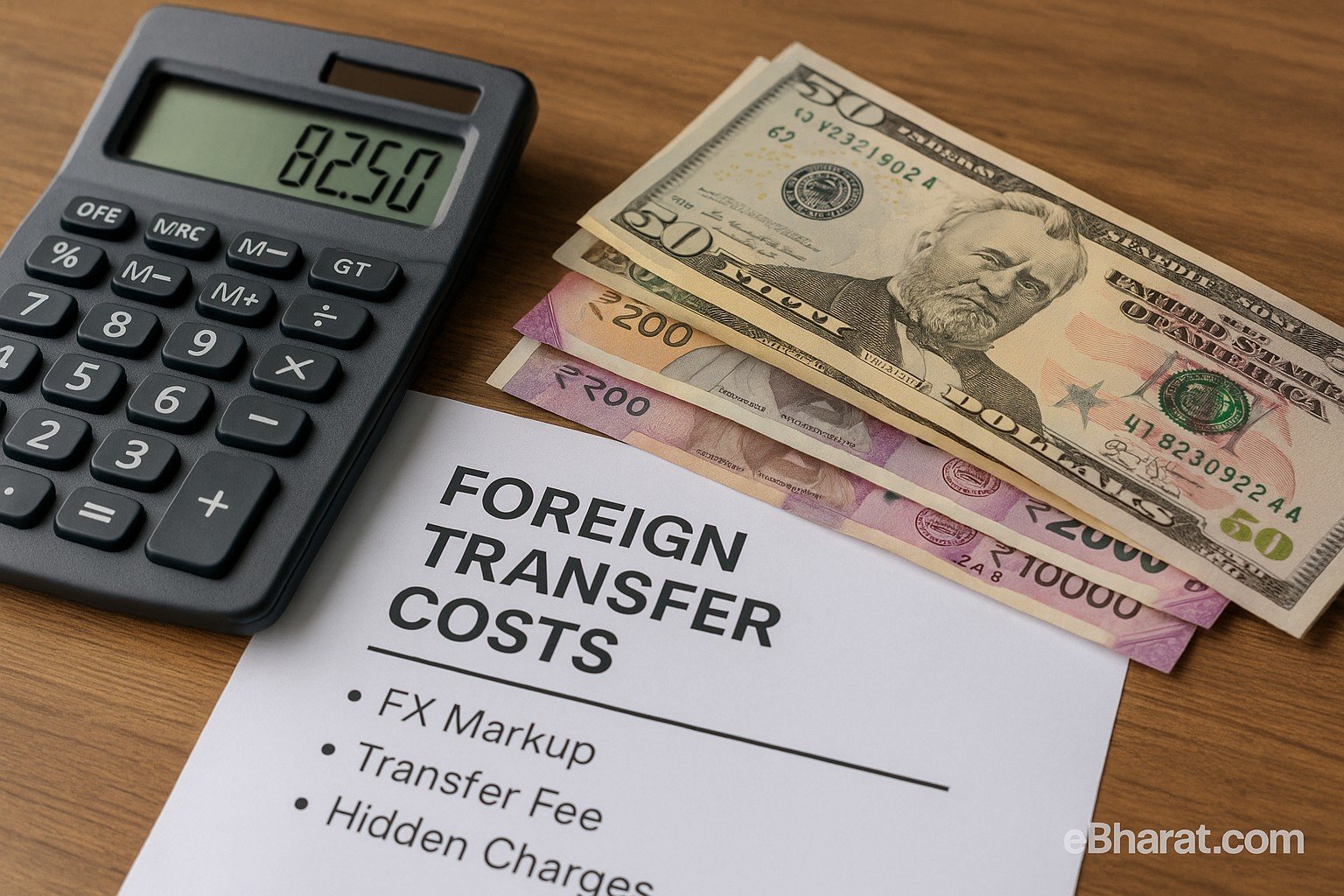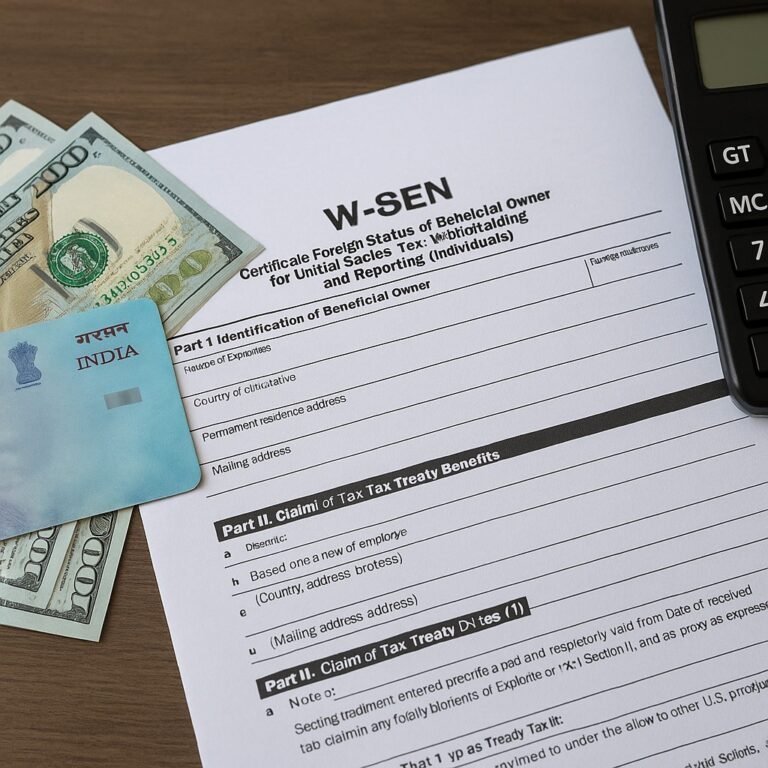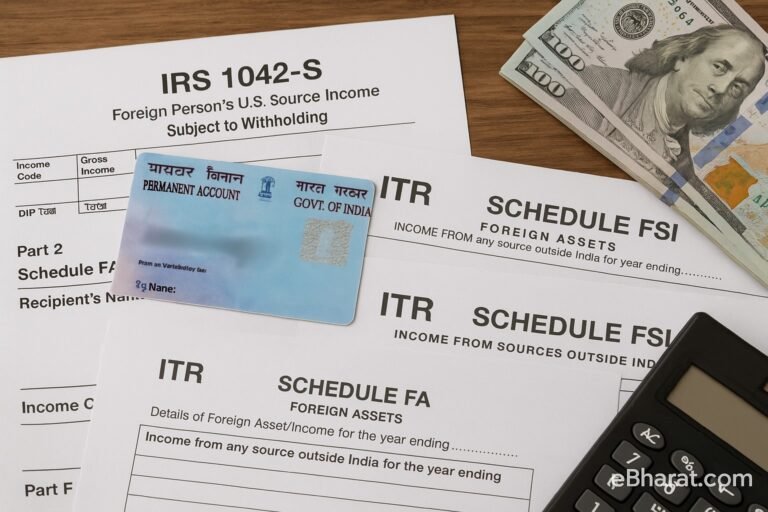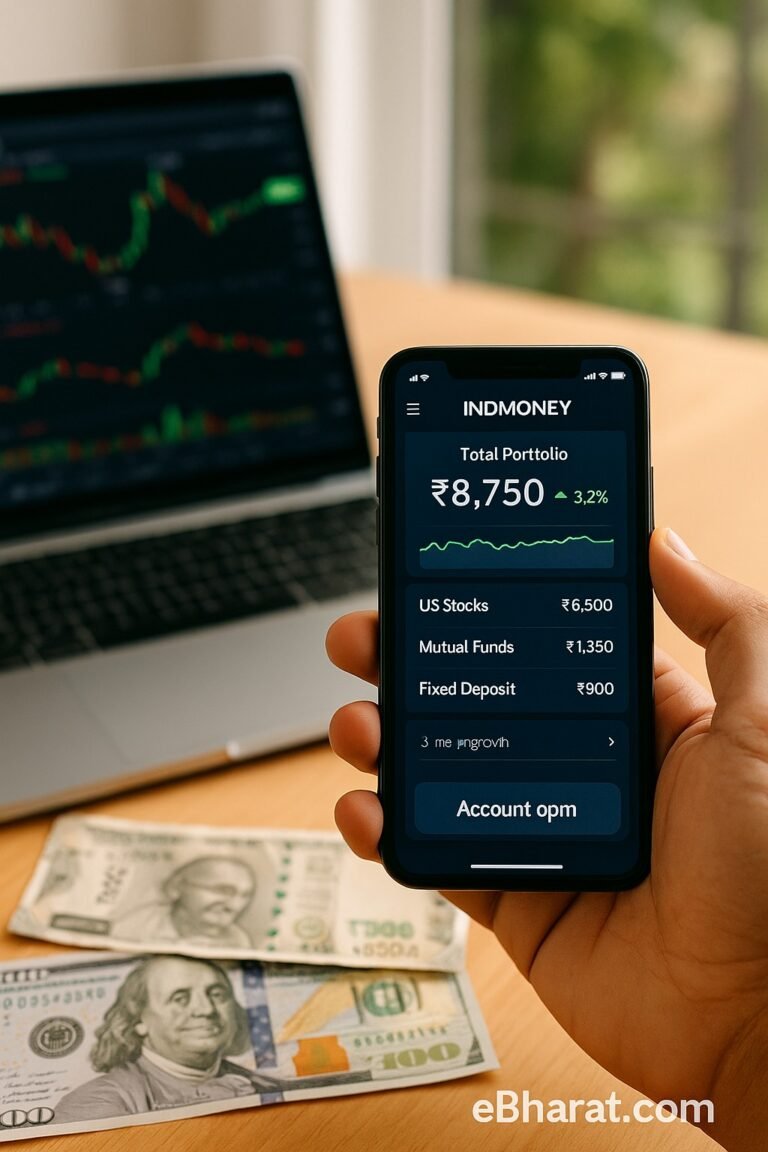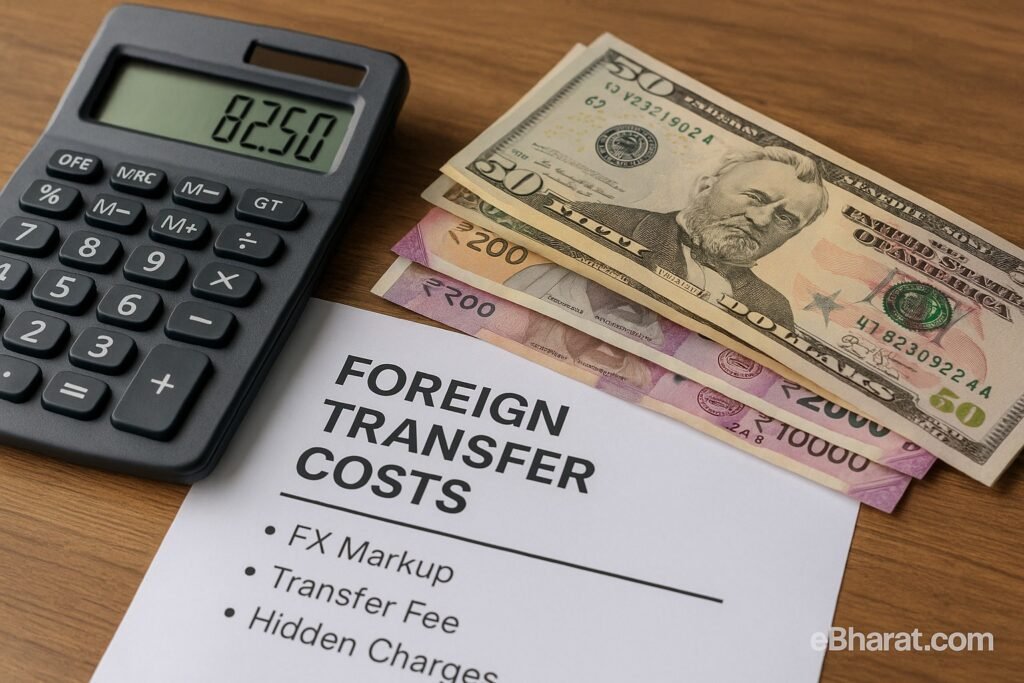
Sending money abroad or making payments in foreign currency can be tricky. The exchange rate you see isn’t always the one you get. Banks and payment platforms often add FX markups, transfer fees, and other hidden costs. These extra charges can reduce the amount your recipient receives. Here’s a simple guide to understanding these costs and saving money.
What Are FX Markups?
FX markups are extra charges added on top of the standard exchange rate.
- Banks usually have higher FX markups, while online money transfer services often offer better rates.
For example, if the market rate is ₹100 for 1 USD, your bank might give you ₹98. The ₹2 difference is the markup.
Transfer Fees You Should Know
Apart from FX markups, most providers charge a transfer fee:
- Fixed fees: Some banks charge ₹200–₹500 per transaction, no matter the amount.
- Percentage fees: Others take 0.5%–2% of your total transfer. Larger transfers mean bigger fees.
Hidden Costs to Watch Out For
Some costs are not obvious and can surprise you:
- Intermediary Bank Fees: Fees charged when money passes through other banks.
- Receiving Bank Fees: The bank receiving your money may deduct a fee.
- Weekend or Delay Charges: Some platforms offer worse rates on weekends or if transfers are delayed.
Tips to Reduce FX and Transfer Costs
- Compare providers: Check both exchange rates and fees before sending money.
- Use online platforms: They usually have lower costs than traditional banks.
- Send larger amounts less often: This reduces fixed fee impact.
- Consider multi-currency accounts: Ideal for frequent international payments.
FX markups, transfer fees, and hidden costs can eat into your money. By comparing rates, checking fees, and planning your transfers carefully, you can send money abroad safely and save more.
By understanding FX markups, transfer fees, and hidden costs, you can make smarter choices, compare providers, and ensure more of your money reaches its destination.

